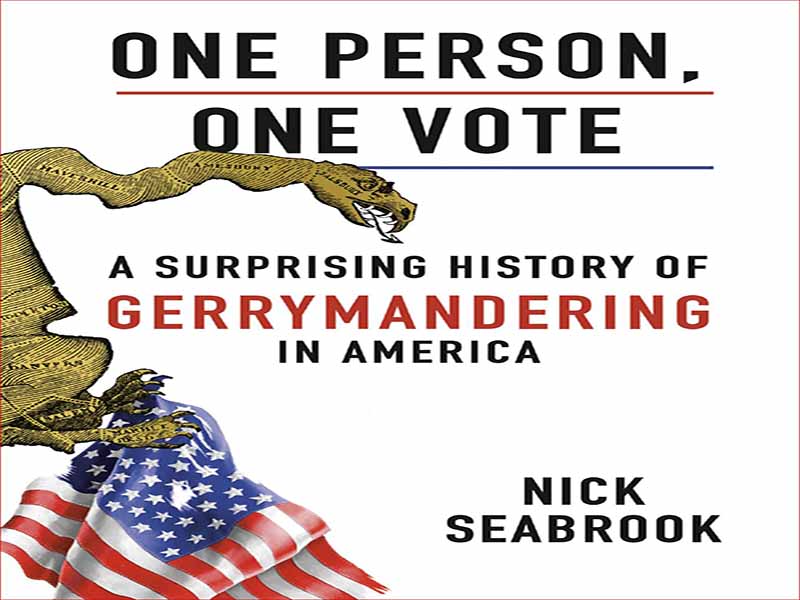- عنوان کتاب: One Person, One Vote-A Surprising History of Gerrymandering in America
- نویسنده/انتشارات: Nick Seabrook
- حوزه: سیاست آمریکا
- سال انتشار: 2022
- تعداد صفحه: 558
- زبان اصلی: انگلیسی
- نوع فایل: pdf
- حجم فایل: 23.7 مگابایت
نتایج انتخابات 2018 ویسکانسین را باید دید تا باور کرد. فرماندار جنجالی ایالت، اسکات واکر، که پس از جان سالم به در بردن از یک تلاش مجادله و برجسته در سال 2012 و کسب یک انتخاب مجدد محدود در سال 2014، برای سومین دوره ریاست جمهوری نامزد شد، در برابر رقیب دموکرات، تونی اورز، ناظر ایالتی قرار گرفت. آموزش عمومی انتظار می رفت انتخابات نزدیک باشد. Cook Political Report این رقابت را بهعنوان یک مسابقه رد و بدل ارزیابی کرد، هر دو نامزد به طور مداوم در حاشیه خطا نظرسنجی میکردند، و مدلهای پیشبینی، از جمله FiveThirtyEight نیت سیلور، این رقابت را به عنوان یکی از نزدیکترین رقابتها در کشور رتبهبندی کرد. در اولین رژگونه، نتیجه بسیار کمی عجیب به نظر می رسد. رقیب، اورز، با تقریباً 30000 رای در برابر رئیس تا حدی نامحبوب، پیروزی اندکی به دست آورد، اختلاف کمی بیش از 1 درصد از نزدیک به 2.7 میلیون رای که به صندوق انداخته شد. با این حال، نگاه کردن به زیر سطح، برخی از ناهنجاریهای نگرانکننده را نشان میدهد. علیرغم از دست دادن رأی عمومی، واکر به نحوی شصت و سه ناحیه از نود و نه ناحیه مجمع ایالتی ویسکانسین و بیست و یک ناحیه از سی و سه ناحیه مجلس سنای ایالت را بر عهده داشت. چگونه یک نامزد برای فرمانداری می تواند تقریباً دو سوم ولسوالی های یک ایالت را به دست آورد و همچنان در سمت بازنده قرار گیرد؟ پاسخ به این سوال در موردی نهفته است که ممکن است به عنوان یکی از فاجعه بارترین نمونه های جنایتکار در تاریخ آمریکا شناخته شود. نبرد بر سر حوزههای قانونگذاری ویسکانسین هم در مجلس ایالتی و هم در رسانهها انجام میشود و در نهایت به واشنگتن دی سی میرسد و در برابر 9 قاضی دادگاه عالی ایالات متحده به رقابت میپردازد. جریماندرینگ دقیقا چیست؟ این اصطلاح کشش خاصی دارد که تعیین یک تعریف مختصر و منسجم از مفهوم اساسی را تا حدودی دشوار می کند. در اوایل قرن بیستم، المر گریفیث، دانشجوی دکترای دانشگاه شیکاگو که رسالهاش «ظهور و توسعه گریماندر» ممکن است یکی از پراستنادترین پایاننامههای دکترا در تاریخ باشد، ژریمندر را چنین تعریف کرد: «بنابراین، مناطق به نظر نمیرسند. محکوم می شوند مگر اینکه به طور خاص برای اهداف انتخاباتی ایجاد شده باشند و عمداً به روشی خاص برای منافع حزبی تشکیل شده باشند.» به عنوان یک تعریف کاربردی برای اهداف این کتاب، فرمول گریفیث شروع خوبی است، اگرچه شاید کمی محدودتر از آنچه من میخواهم باشد. با این وجود، با طرح سه عنصر اساسی این عمل، به عنوان یک نقطه پرش مناسب برای بحث در آینده عمل می کند.
The results of Wisconsin’s 2018 election had to be seen to be believed. The state’s controversial governor, Scott Walker, running for a third term in office after surviving a closely contested and high-profile recall effort in 2012, and securing a narrow reelection in 2014, faced off against the Democratic challenger Tony Evers, the state’s superintendent of public instruction. The election was expected to be a close one. The Cook Political Report rated the race as a toss-up, both candidates were consistently polling within the margin of error, and prediction models, including Nate Silver’s FiveThirtyEight, had the contest ranked as one of the closest in the nation. At first blush, very little appears strange about the result. The challenger, Evers, eked out a narrow victory by almost 30,000 votes over the somewhat unpopular incumbent, a margin of slightly more than 1 percent of the nearly 2.7 million ballots that were cast. Yet peering beneath the surface reveals some disturbing abnormalities. Despite losing the popular vote overall, Walker somehow carried sixty-three of Wisconsin’s ninety nine state assembly districts, and twenty-one of the thirtythree state senate districts. How could a candidate for governor win almost two-thirds of the districts in a state and still end up on the losing side? The answer to that question lies in what may go down as one of the most egregious instances of gerrymandering in American history. The battle over Wisconsin’s legislative districts would play out in both the statehouse and the media, eventually reaching all the way to Washington, D.C., and a showdown before the nine justices of the U.S. Supreme Court. What exactly is gerrymandering? The term has a certain elasticity to it that makes pinning down a concise and consistent definition of the underlying concept somewhat tricky. Writing in the early twentieth century, Elmer Griffith, a University of Chicago PhD student whose treatise “The Rise and Development of the Gerrymander” may be among the most cited doctoral dissertations in history, defined the gerrymander thus: “Districts would not seem, therefore, to be gerrymandered unless they were established especially for election purposes and were formed intentionally in a particular manner for partisan advantage.” As a working definition for the purposes of this book, Griffith’s formulation is a good start, although perhaps a little more restrictive than I would like. Nevertheless, it serves as a decent jumping-off point for the discussion to come, by laying out the three quintessential elements of the practice.
این کتاب را میتوانید از لینک زیر بصورت رایگان دانلود کنید:
Download: One Person, One Vote-A Surprising History of Gerrymandering in America




































نظرات کاربران